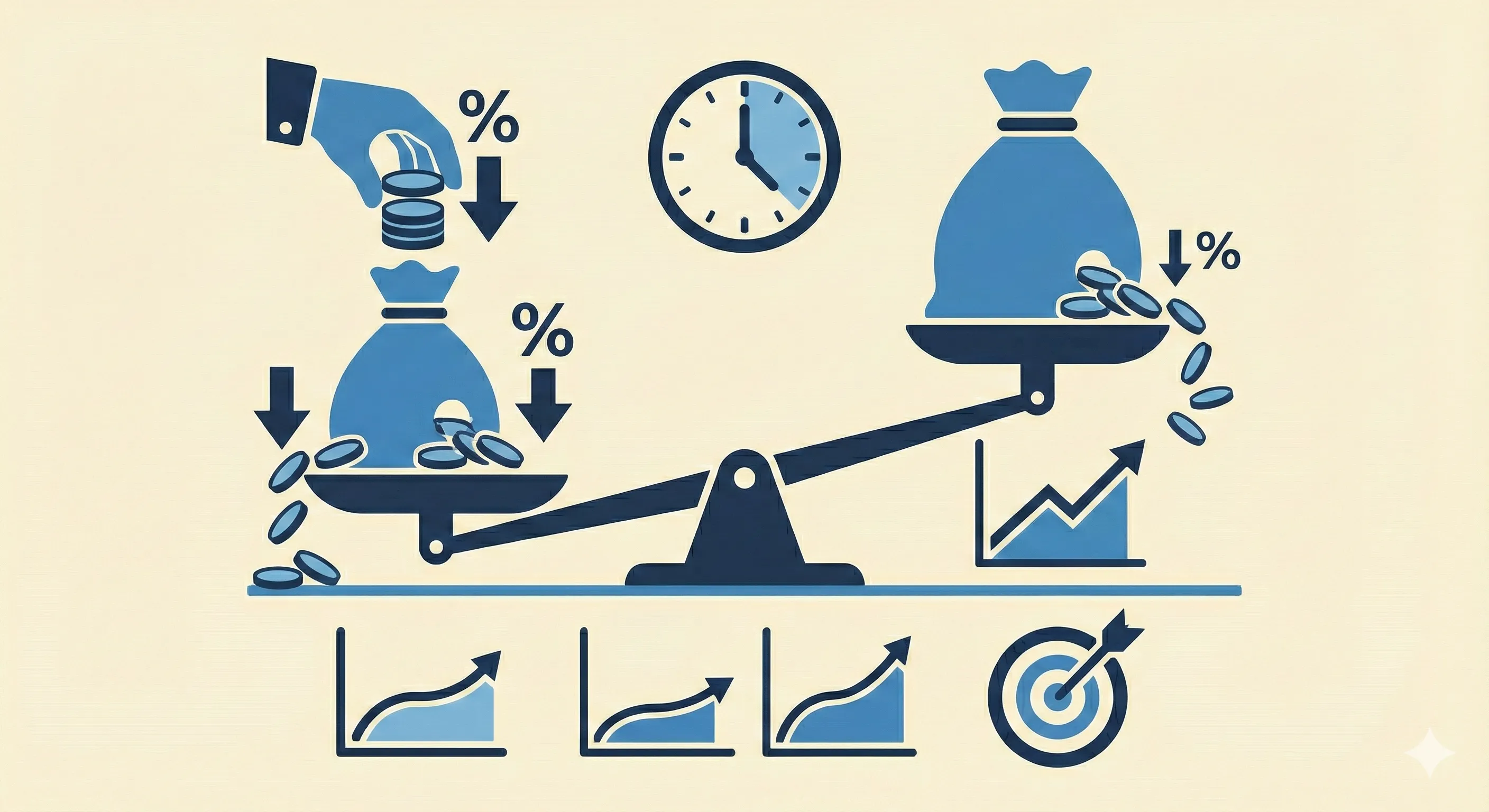Load vs No-Load Fund Cost Checker - Tool

What the Tool Is Designed to Show
The Load vs No-Load Fund Cost Checker simulates two paths for the same initial investment:
- Load fund path: deducts an upfront percentage (the “front-load”), then applies an annual expense ratio.
- No-load fund path: skips the upfront charge and applies only its typically lower annual expense ratio.
By comparing both, how fees may impact account values over a chosen holding period.
Key Takeaways
- The tool compares a load fund (with upfront or ongoing sales charges) against a no-load fund (with lower or no sales charges).
- It calculates a hypothetical ending value of an investment ending value over a chosen time horizon, after accounting for fees.
- Investors can see both annual fees paid and the difference in ending portfolio value side by side.
- A break-even horizon is calculated, showing when - if ever - a higher-cost option might catch up.
How to Use the Tool Step by Step
- Investment Amount
Enter the starting balance - for example, $100,000. This is the capital you plan to put into the fund. - Expected Gross Return (per year)
This is the pre-fee return assumption, expressed as a percentage. For instance, 6% per year. The tool applies this rate before subtracting fees. - Holding Period
Choose the time horizon in years - whether short-term (e.g., 5 years) or longer (e.g., 12 years). The longer the period, the more compounding magnifies fee differences. - Front-Load % (Load Fund)
If the load fund charges an upfront sales fee - say 3.5% - the tool deducts it immediately. For a $100,000 investment, that means $3,500 goes to fees before any growth. - Load Fund ER (Expense Ratio)
Input the annual cost for managing the fund, such as 0.50%. This is deducted each year from the load fund’s balance. - No-Load Fund ER
Enter the annual expense ratio for the no-load fund. In many cases, this may be closer to 0.12%.
When you hit Compare, the tool calculates two growth curves - one for the load fund and one for the no-load alternative.
Reading the Results
The results page displays:
- Ending Value (No-load vs Load): Final balances after fees and growth.
- Fees Paid (Estimated): How much of the return went to costs over the holding period.
- Higher Ending Value: Which option leaves more money at the end of the chosen time frame?
- Break-even Horizon: If the load fund ever overtakes the no-load fund, the tool shows when that happens. If not, it indicates “no cross within horizon.”
- Growth Chart: A side-by-side visualization showing how the two balances diverge over time.
This tool is for educational purposes only and provides hypothetical illustrations based on the assumptions you enter. It is not investment advice, does not recommend one fund over another, and does not predict future performance. Actual investment results may differ materially from the hypothetical outcomes shown. The tool does not account for all costs, taxes, trading impacts, or market factors. Investors should consider their individual circumstances and consult a qualified financial professional before making investment decisions.
How optimized is your portfolio?
PortfolioPilot is used by over 40,000 individuals in the US & Canada to analyze their portfolios of over $30 billion1. Discover your portfolio score now:






